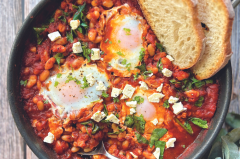According to Wine Australia’s “Market Insights capita wine consumption declined from 20.8L per person per year in 2020 to 18.3L in 2022. Nevertheless, Australians are still the second-highest wine consumers outside of Europe in the world. Although there is a worldwide trend toward drinking less wine, it remains a very popular drink and has been so for millennia.
The earliest confirmed archaeological findings of wine come from Neolithic villages of the northern Zagros mountains of Iran where pottery jars with traces have been dated to around 5400 BCE. This was a heavily resinated wine, very different to most wine we drink in the 21st century but close to a modern-day retsina. The Neolithic wine was flavoured with mint, coriander and sage as well as resin, but it still has a direct lineage to a modern merlot or chardonnay as the product of the fermented grape.
Wine varieties
Modern winemaking involves harvested grapes and fermentation, but the techniques vary depending on the variety.
Reds are produced by destemming and crushing the grapes into a tank and leaving the skins in contact with the juice throughout the fermentation. The presence of grape skin makes the wine red in colour. The most popular red varieties used in Australia include Cabernet Sauvignon, Merlot, Pinot Noir and Shiraz, while Cabernet Franc and Grenache are often used in blends.
Whites are mostly processed without destemming or crushing and are transferred from picking bins directly to the press. In contrast to the production of red wine, the juice is not left in contact with the grape skins while fermenting, resulting in a wine that varies in colour from golden yellow to a very pale yellow or light straw colour. The most common types of white wines include Chardonnay, Sauvignon Blanc, Riesling and Semillon.
Rosé wines are made by pressing ripe, red grapes but leaving the juice in contact with the skins for just a short time to extract the desired colour, usually a pale pink. The skins of the grapes are removed halfway through fermentation. Consequently, the flavour of rosés falls mid-way between whites and reds.
Sparkling wines contain carbon dioxide and come in red or white varieties. There are various methods by which those refreshing bubbles make it into your wine. Carbon dioxide may be injected, but this produces big bubbles that dissipate quickly in the glass. The Metodo Italiano, or the Charmat process, is where wine undergoes a secondary fermentation in bulk tanks and is bottled under pressure, producing smaller, longer-lasting bubbles. This is now used widely around the world to produce light, delicate, sparkling wines which are ready to drink. Then there is the traditional method or méthode champenoise. With this method, the bubbles for more complex wines are produced by secondary fermentation in the bottle. This method is used to produce Champagne and other quality sparkling wines and is more expensive than the Charmat process.
Dessert wines are sweet, containing between 50 to 400g of sugar per litre of wine and are often drunk after meals in place of desserts. They are made by the premature cessation of the fermentation process, which ensures that varying residual sugar levels remain in the wine. In other cases, the winemaker may choose to hold back some of the sweet grape juice and add it to the wine after the fermentation is complete, a technique known as süssreserve.
Fortified wines such as port are more alcoholic than other wines. The fermentation process is halted with the addition of a spirit, such as brandy, or the additional spirit may be added after the fermentation process is complete.
What is in wine?
Wine contains a range of antioxidants. They are generally found in much higher concentrations in red wine since they mainly occur in concentrated amounts in the skins of the grapes, which are included in the red wine fermentation process.
Resveratrol: Produced by grapevines in response to injury, Resveratrol is an antioxidant thought to have a range of health-promoting effects including preventing blood clot formation, reducing LDL cholesterol levels, reducing the risk of atherosclerotic plaque build-up and reducing inflammation.
Quercetin: Occuring naturally in grape skins and stems, Quercetin protects grapes from ultraviolet light damage. The more grapes are exposed to sunlight, the more quercetin they contain. Levels are also higher in wines which are derived from thick-skinned grape varieties, such as Cabernet Sauvignon. It is an antioxidant that, like resveratrol, reduces LDL levels, blood clotting and inflammation.
Catechins: The primary catechins in wine are catechin, epicatechin and gallate epicatechin. Catechins react with tannins to make the primary flavour component in red wine and are the main source of astringent and bitter sensations. Catechins dilate (open) blood vessels, lower LDL levels and reduce plaque formation.
Alcohol: We’ve looked at the good news, now the bad news: wine contains alcohol. Your body treats alcohol as a poison and seeks to break it down as quickly as possible.
Sulphites: Sulphur-based preservatives such as potassium metabisulphite (224) and sulphur dioxide (preservative 220) are added to wine to prevent bacterial spoilage and ensure a longer shelf life. Sulphites have been linked to health symptoms including headaches, rashes, hives, abdominal pain, nausea, vomiting, diarrhoea, respiratory problems such as asthma and other allergic reactions. There are significantly less sulphites in organic wine than in non-organic wine.
Wine in your body
Your heart: The Copenhagen





